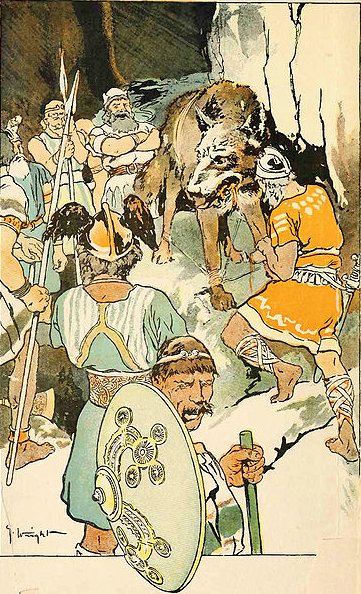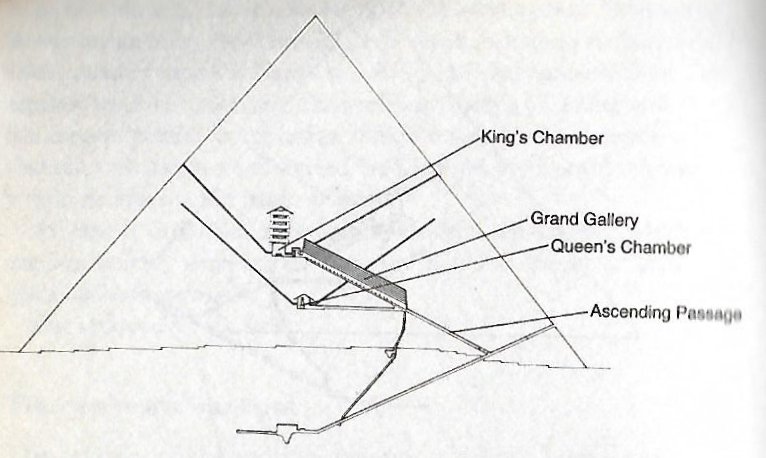The Wing of the Pegasus Horse would create a flow of Air and we can perceive a contrast to the flow of Water from the Urn of Aquarius. Between the upper half-sphere containing Air and the lower hemisphere with accumulated Water should be the inhabitable Terra Firma. ... The father does not disappear, but goes on being fulfilled. Neither dimmed nor destroyed is the face of a lord, a warrior, craftsman, an orator. Rather, he will leave his daughters and sons. So it is that I have done likewise through you. Now go up there on the face of the earth; you will not die. Keep the word. So be it, said the head of One and Seven Hunaphu - they were of one mind when they did it ...
The Earth was probably represented by Spica in Virgo (the Virgin Earth) - significantly her great star below the ecliptic face of the earth:
... What happens after (or happened, or will happen sometime, for this myth is written in the future tense), is told in the Völuspa, but it is also amplified in Snorri's Gylfaginning (53), a tale of a strange encounter of King Gylfi with the Aesir themselves, disguised as men, who do not reveal their identity but are willing to answer questions: 'What happens when the whole world has burned up, the gods are dead, and all of mankind is gone? You have said earlier, that each human being would go on living in this or that world.' So it is, goes the answer, there are several worlds for the good and the bad. Then Gylfi asks: 'Shall any gods be alive, and shall there be something of earth and heaven?' And the answer is: 'The earth rises up from the sea again, and is green and beautiful and things grow without sowing. Vidar and Vali are alive, for neither the sea nor the flames of Surt have hurt them and they dwell on the Eddyfield, where once stood Asgard. There come also the sons of Thor, Modi and Magni, and bring along his hammer. There come also Balder and Hoder from the other world. All sit down and converse together. They rehearse their runes and talk of events of old days. Then they find in the grass the golden tablets that the Aesir once played with. Two children of men will also be found safe from the great flames of Surt. Their names, Lif and Lifthrasir, and they feed on the morning dew and from this human pair will come a great population which will fill the earth. And strange to say, the sun, before being devoured by Fenrir, will have borne a daughter, no less beautiful and going the same ways as her mother.' Then, all at once, concludes Snorri's tale wryly, a thunderous cracking was heard from all sides, and when the King looked again, he found himself on the open plain and the great hall had vanished ... At April 9 (99 = 464) was another Lady, viz. the one hanging high up in the Sky - Andromeda - with the train of her garment (Adhil) flowing at the opposite side of the year compared to Spica.
With Spica at *202 and - as I have suggested - at Bb4-17, ... In the present context 'mouth' has an additional connotation, given that it refers in part to Heart of Earth, the deity called 'Mundo' today. This is the great Mesoamerican earth deity, the ultimate swallower of all living beings, depicted in Classic Mayan art (in the Palenque relief panels, for example) as an enormous pair of jaws upon whose lips even the feet of great lords must rest in precarious balance, and into whose throat even great lords must fall. Turning to the contemporary scene, daykeepers who visit the main cave beneath the ruins of Rotten Cane, the last Quiché capital, speak of the danger of falling into 'the open mouth of the Mundo' there, which is said to be more than four yards wide ... it would be harmonious if Bb4-27 (→ 4 * 27 → 108) would point out where the final battle of the gods took place (would take place): ... 'Five hundred gates and forty more - are in the mighty building of Walhalla - eight hundred 'Einherier' come out of each one gate - on the time they go out on defence against the Wolf.'
How did we get here? i) Side a on the B tablet was where Metoro began to read. ii) The number of glyphs up to the end of line 7 on side b is 284, which could refer to December 30 (364 = *284). The number of glyphs up to the end of line 7 on side a is 294, which could refer to the corresponding number in a system with 10 synodic lunar mothns (10 * 29½ = 295).
iii) It seems natural to begin reading on side a because probably the lunar view preceded the light from the Sun. ... She could see nothing, because the sun and the moon did not then exist; and then, she could not stand up because there was not enough room in the shellfish. Constantly hunting about she at last found a snail. To endow it with power she placed it under her arm, lay down and slept for three days. Then she let it free, and still hunting about she found another snail bigger than the first one, and treated it in the same way. Then she said to the first snail: 'Can you open this room a little, so that we can sit down?' The snail said it could, and opened the shell a little. Old-Spider then took the snail, placed it in the west of the shell, and made it into the moon. Then there was a little light, which allowed Old-Spider to see a big worm. At her request he opened the shell a little wider, and from the body of the worm flowed a salted sweat which collected in the lower half-shell and became the sea. Then he raised the upper half-shell very high, and it became the sky. Rigi, the worm, exhausted by this great effort, then died. Old-Spider then made the sun from the second snail, and placed it beside the lower half-shell, which became the earth ... iv) Counting glyphs from the beginning of side b could therefore correspond to counting from January 1. There were 31 days in January and 31 glyphs in line Bb1. v) However, the Sun would not reappear immediately after the December solstice, because he had preceded the correct position for his return, as regarded against the fixed stars. 355 (December 21) + 118 = 473 (= 472 + 1) = 355 + 10 + 540 / 5. ... 108 (= 4 * 27 = 472 - 364 = 4 * 118 - 4 * 91) was well known anciently ...
vi) The number of glyphs on the G tablet is 471 = 364 + 107. Also in the B text there could be an insertion of a day zero + 107 days between December 30 (364) and April 17 (365 + 107 = 472). vii) From April 18 (→ 4-18) there could have been a 7-day wake. For in April (Vaitu Nui) 25 (115) the Explorers sailed away with destination Easter Island. ... On the twenty-fifth day of the first month (Vaitu Nui), Ira and Makoi set sail; on the first day of June ('Maro'), the bow of Ira's canoe appeared on the distant horizon, came closer and closer on its course, and sailed along, and finally (one) could see the (new home) land ... [E:17]
Admittedly this is so far only an assembly of ideas which somehow needs to be verefied.
|
|||||||||||||||||||||||||||||||||||||||||||||||||||||||||||||||||||||||||||||||||||||||||||||||||||||||||||||||||||||||||||||||||||||||||||||||||||||||||||||||||||||||||||||||||||||||||||||||||||||||||||||||||||||||||||||||||||||||||||||||||||||||||||||||||||||||||||||||||||||||||||||||||||||||||||||||||||||||||||||||||||||||||||||||||||||||||||||




















